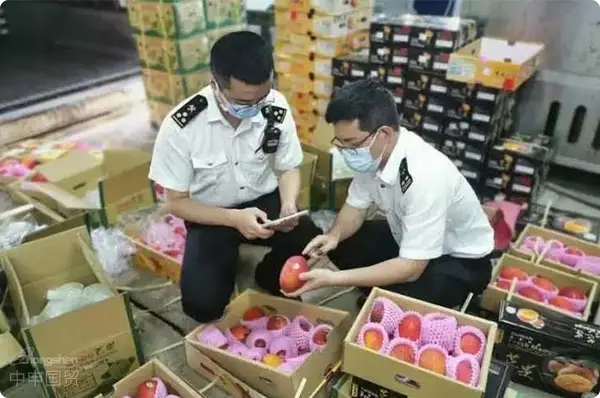- Shanghai Zhongshen International Trade Co., Ltd. - Two decades of trade agency expertise.
- Service Hotline: 139 1787 2118
With the increasing growth of global trade, importing fruits has become a popular industry. But every link in the import process is crucial. This article will analyze the complete process of importing fruits for you.

I. Filing and Confirmation of Import Qualifications
First, the importing enterprise needs to file with the customs as a consignee and obtain relevant qualifications for importing fruits. This process involves the use of the Single Window or the Internet + Customs system.
The enterprise also needs to ensure that the types of imported fruits are on the list of permitted imports. This list can be queried on the website of the General Administration of Customs.
For imported fruits, it must be ensured that they enter the country from the supervision sites designated by the General Administration of Customs. Query path: Website of the General Administration of Customs - Special Columns - Business Columns - List of Designated Supervision Sites - List of Designated Supervision Sites for Imported Fruits.
II. Basic Requirements for Importing Fruits
Imported fruits shall not be mixed or contain other fruits not listed on the phytosanitary certificate.
The packing boxes of fruits shall indicate the fruit name, origin, and the name or code of the packing factory, and shall use Chinese or English.
It is necessary to ensure that the fruits do not carry quarantine pests, soil, branches, leaves, and other plant residues prohibited from entering China.
Ensure that the detected amount of toxic and harmful substances does not exceed Chinas relevant safety and health standards.
If there are relevant agreements or protocols between the exporting country and China, the imported fruits also need to meet the requirements of these documents.
III. Quarantine Approval and Inspection and Quarantine Process
Before signing an import contract or agreement, the enterprise should apply to the customs for quarantine approval and obtain a quarantine permit.
The enterprise can declare the goods through the Single Window or the Internet + Customs platform. After declaration, the customs will review and conduct inspections or examinations as needed.
Inspections include machine inspections and manual inspections. Machine inspections mainly use scanning equipment to determine whether there are hidden or夾帶 items in the goods. Manual inspections include verifying the goods and certificates, inspecting the phytosanitary certificate, and checking whether the fruits carry harmful organisms, etc.
Imported fruits that have not completed on - site quarantine need to be stored in the places designated by the customs and shall not be moved, sold, or used privately.
IV. Result Assessment
For those that pass the inspection and quarantine, an inspection and quarantine certificate for entry goods will be issued and release will be permitted.
If harmful organisms are found, pest control treatment needs to be carried out, and release will be permitted only after the treatment is qualified.
Fruits that do not meet the inspection and quarantine requirements will be returned or destroyed under the supervision of the customs. If a claim needs to be made abroad, a relevant inspection and quarantine certificate will be issued.
The process of importing fruits involves multiple links, from customs filing to inspection and quarantine. Each step requires strict operation and review. To ensure the smooth entry of fruits into the market, enterprises must be familiar with this process and ensure that each step complies with the regulations. I hope all enterprises can successfully complete the import process.
The above content is from the Animal and Plant Quarantine Office of the Customs.ZhongShen International TradeAs a one - stop importExport Representationservice provider, it can provide customizedimport and exportSolution. If you needforeign tradeFor import and export agency services, please feel free to contact our company for business inquiries. The consultation hotline is 139 - 1787 - 2118.
Related Recommendations
Category case
Contact Us
Email: service@sh-zhongshen.com
Related Recommendations
Contact via WeChat

? 2025. All Rights Reserved. 滬ICP備2023007705號-2  PSB Record: Shanghai No.31011502009912
PSB Record: Shanghai No.31011502009912









